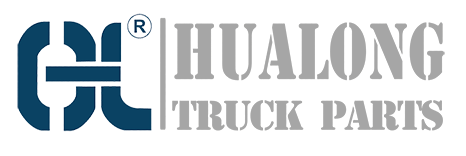The Importance of Hydraulic Cylinder Rods
Hydraulic cylinders are crucial components in various industrial applications, allowing for linear motion and force generation. One key element of hydraulic cylinders is the rod, which plays a vital role in the overall performance and reliability of these systems.
Understanding Hydraulic Cylinder Rods
Hydraulic cylinder rods, also known as piston rods, are solid cylindrical shafts that connect the piston to the hydraulic cylinder's crosshead. They transmit the force generated by the hydraulic fluid to the external load and enable linear movement.
The Role of Hydraulic Cylinder Rods
Hydraulic cylinder rods serve multiple functions within the hydraulic cylinder system:
1. Force Transmission:
The primary purpose of a hydraulic cylinder rod is to transmit the force generated by the hydraulic fluid to the load being moved. The rod's diameter and material strength play a crucial role in determining the maximum force capacity of the hydraulic cylinder.
2. Linear Motion:
The hydraulic cylinder rod converts the hydraulic pressure into linear motion. As the hydraulic fluid enters the cylinder, it pushes the piston and rod forward, creating the desired linear movement.
3. Stability and Alignment:
The rod provides stability and alignment to the piston within the hydraulic cylinder. It prevents lateral movements and ensures that the piston moves linearly without any tilting or wobbling.
4. Seal Retention:
Hydraulic cylinder rods feature a seal gland that holds the piston seal in place. This prevents hydraulic fluid leakage and maintains the system's efficiency and performance.
Types of Hydraulic Cylinder Rods
Hydraulic cylinder rods are available in different types, each designed to meet specific application requirements:
1. Hard Chrome Plated Rods:
Hard chrome plated rods are widely used in hydraulic cylinders due to their enhanced corrosion resistance and high surface hardness. The chrome plating provides excellent wear resistance, reducing the risk of premature rod failure.
2. Stainless Steel Rods:
Stainless steel rods are suitable for applications where corrosion resistance is critical. They are commonly used in industries exposed to harsh environments, such as marine and food processing.
3. Coated Rods:
Coated rods are designed to provide additional protection against corrosion and wear. They are often coated with materials like ceramic, zinc, or nickel to enhance their durability.
4. High-Strength Alloy Rods:
High-strength alloy rods are used in applications that require exceptional strength and durability. These rods are made from alloys like chromoly steel, which offer superior mechanical properties.
Maintenance and Care for Hydraulic Cylinder Rods
To ensure optimal performance and longevity of hydraulic cylinder rods, proper maintenance and care are essential:
1. Regular Inspection:
Inspect the rod's surface regularly for signs of wear, corrosion, or damage. Address any issues promptly to prevent further damage to the hydraulic cylinder system.
2. Lubrication:
Apply appropriate lubrication to the rod's surface to reduce friction and wear. This helps extend the rod's lifespan and ensures smooth operation.
3. Seal Maintenance:
Check the seal gland regularly for any leaks or damage. Replace worn-out seals to prevent hydraulic fluid leakage, which can lead to system inefficiency and reduced performance.
4. Cleaning:
Clean the rod's surface regularly to remove dirt, debris, and contaminants. This prevents abrasive particles from causing damage to the rod's surface.
Conclusion
Hydraulic cylinder rods are integral components of hydraulic systems, responsible for force transmission, linear motion, stability, and seal retention. Understanding the different types of rods and proper maintenance techniques can help maximize the performance and longevity of hydraulic cylinder systems.

